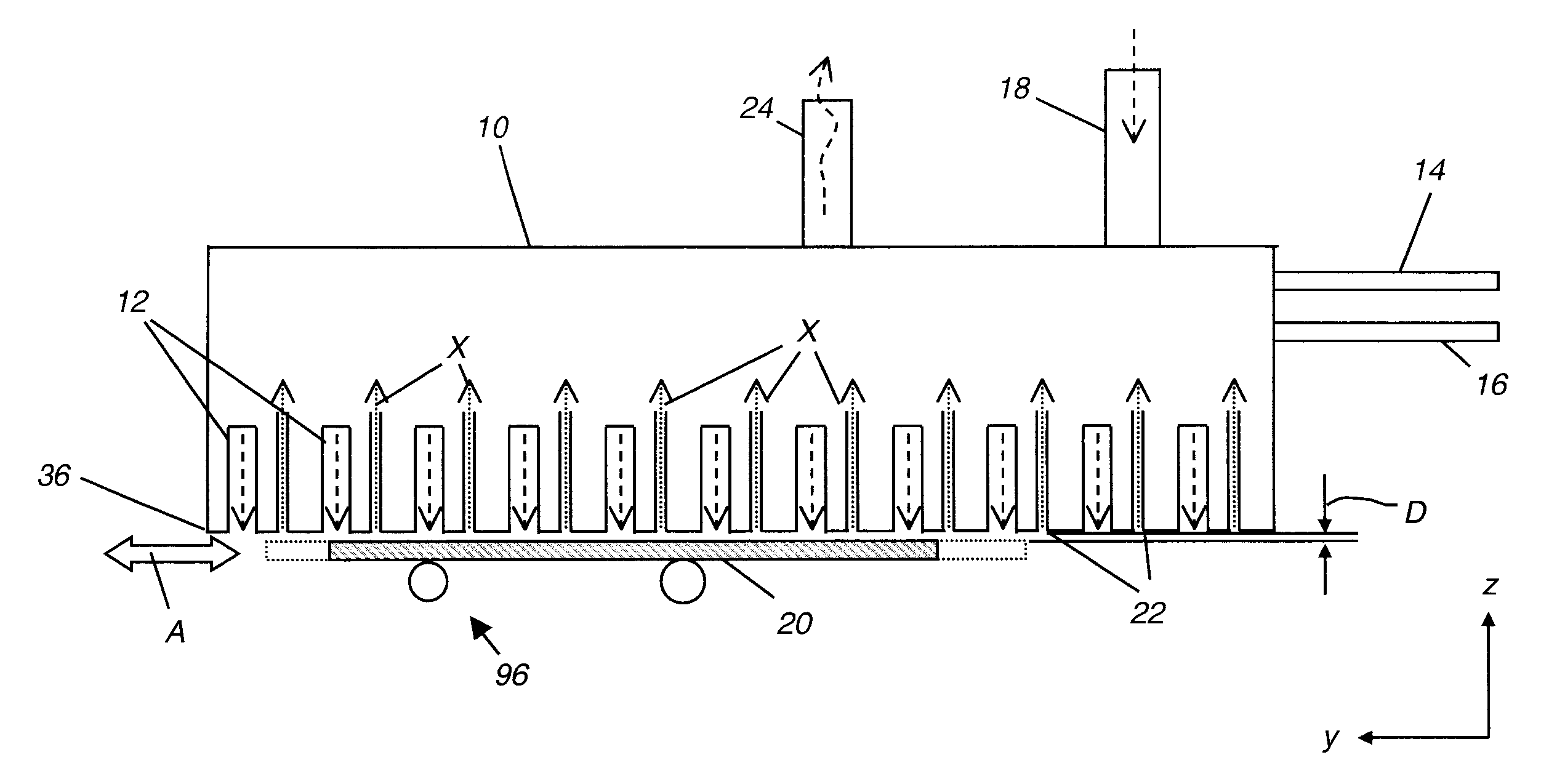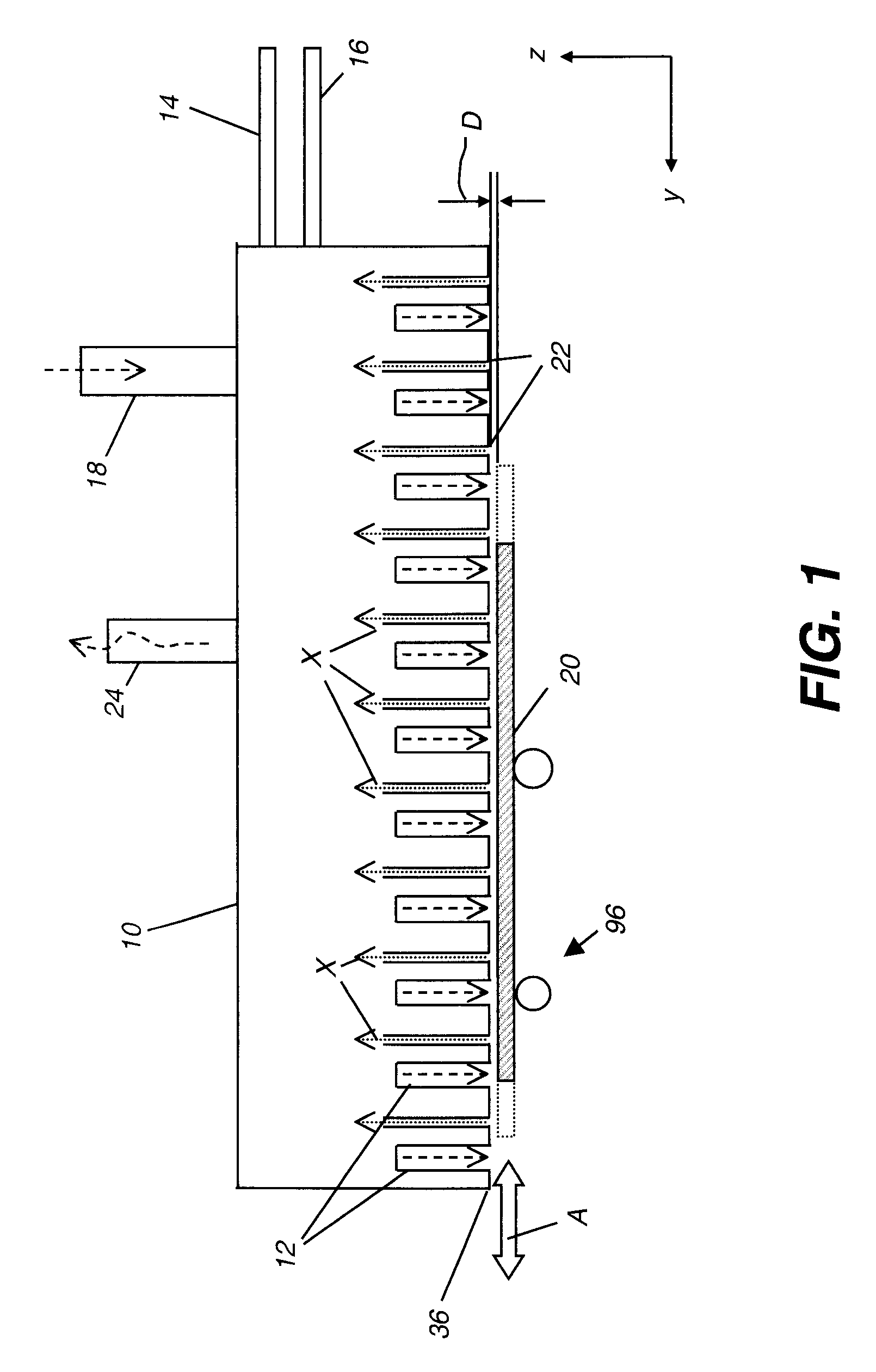Deposition system and method using a delivery head separated from a substrate by gas pressure
a delivery head and gas pressure technology, applied in the direction of coatings, chemical vapor deposition coatings, metallic material coating processes, etc., can solve the problems of large amount of chemical vapor deposition reaction, difficult to avoid some direct reaction of different precursors, and relatively insensitive to transport non-uniformities, etc., to achieve the effect of reducing the residence tim
- Summary
- Abstract
- Description
- Claims
- Application Information
AI Technical Summary
Benefits of technology
Problems solved by technology
Method used
Image
Examples
example e1
[0163]A film of Al2O3 was grown on a silicon wafer using the APALD device of the present invention. The APALD device was configured analogously to the device of comparative example C1. The film was grown at a substrate temperature of 150° C. Gas flows delivered to the APALD coating head were as follows:
[0164](i) A nitrogen inert purge gas was supplied to channels 1, 3, 5, 7, 9, and 11 at a total flow rate of 3000 sccm.
[0165](ii) A nitrogen based gas stream containing trimethylaluminum was supplied to channels 4 and 8. This gas stream was produced by mixing a flow of ˜400 sccm of pure nitrogen with a flow of 3.5 sccm of nitrogen saturated with TMA at room temperature.
[0166](iii) A nitrogen based gas stream containing water vapor was supplied to channels 2, 6, and 10. This gas stream was produced by mixing a flow of 350 sccm of pure nitrogen with a flow of 20 sccm of nitrogen saturated with water vapor at room temperature.
[0167]The coating head with the above gas supply streams was br...
PUM
| Property | Measurement | Unit |
|---|---|---|
| width | aaaaa | aaaaa |
| separation distance | aaaaa | aaaaa |
| distance | aaaaa | aaaaa |
Abstract
Description
Claims
Application Information
 Login to View More
Login to View More - R&D
- Intellectual Property
- Life Sciences
- Materials
- Tech Scout
- Unparalleled Data Quality
- Higher Quality Content
- 60% Fewer Hallucinations
Browse by: Latest US Patents, China's latest patents, Technical Efficacy Thesaurus, Application Domain, Technology Topic, Popular Technical Reports.
© 2025 PatSnap. All rights reserved.Legal|Privacy policy|Modern Slavery Act Transparency Statement|Sitemap|About US| Contact US: help@patsnap.com



